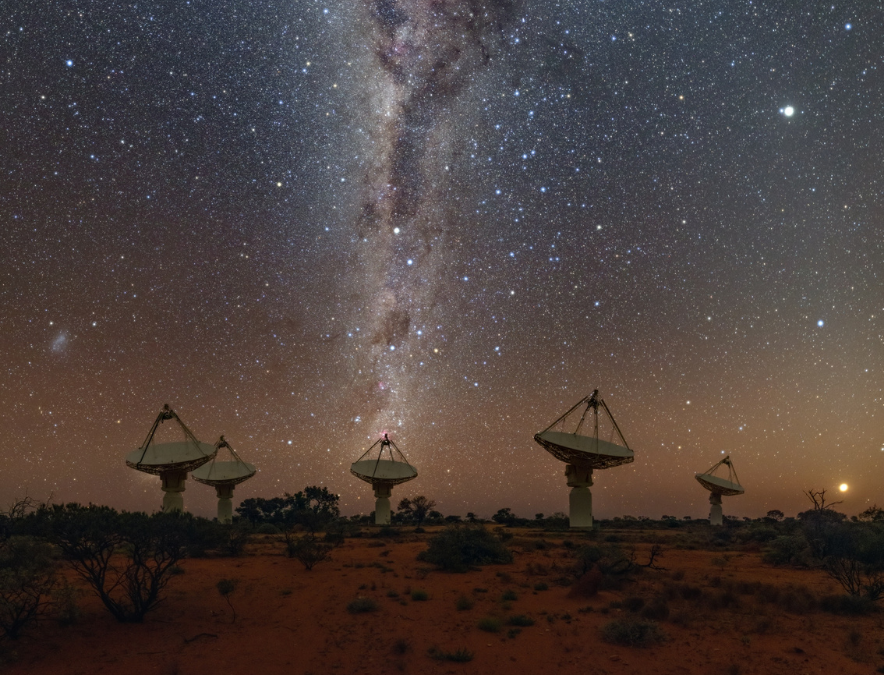
An international team of astronomers – led by a CSIRO research engineer – has won an award for the most impactful research paper published in US journal Science.
CSIRO astronomer Dr Keith Bannister headed an international team of 54 researchers – from Australia, Chile, India, Japan, the Netherlands, the United Kingdom and the United States – which became the first to pinpoint the origin of a non-repeating fast radio burst (FRB).
The research paper – A single fast radio burst localized to a massive galaxy at cosmological distance – was published by Science magazine in August 2019.
The American Association for the Advancement Science (AAAS) presented the Newcomb Cleveland Prize – first awarded in 1923 – to Dr Bannister and his colleagues at a virtual ceremony earlier this month.
“It’s thrilling to be part of cutting-edge science and technology in Australia, and to have it recognised internationally,” Dr Bannister said.
Fast radio bursts (FRB) were first detected in 2007 by West Virginia University researcher Duncan Lorrimer using the Parkes radio telescope.
FRBs are intense, incredibly bright pulses of radio emission from galaxies billion of light years away, that last for only a fraction of a second.
However, the exact location and origin of FRBs remained a mystery until Dr Bannister’s team led the breakthrough.
With CSIRO’s Australian Square Kilometre Array Pathfinder (ASKAP) radio telescope in Western Australia, the team used the array to continuously monitor large parts of the sky.
A ‘live action replay’ system – designed by Dr Bannister – helped pinpoint the location of the burst. The team then used large optical telescopes – including those in Hawaii and Chile – to locate the FRB’s galaxy of origin.
“Our results confirmed that fast radio bursts come from very distant galaxies. With the power of ASKAP we can tell which galaxy a burst came from, and also pinpoint its location within that galaxy,” Dr Bannister said.
Editor-in-chief of Science, Holden Thorp, praised the research.
“Fast radio bursts are extremely short extragalactic events — that is, they originate in a galaxy far, far away — and identifying the exact signal source of one is like looking for the proverbial needle in a haystack.
“The methods outlined in this study will allow other teams to determine the astronomical origins of more FRBs and in turn, perhaps the elusive nature of their sources,” Dr Thorp said.
